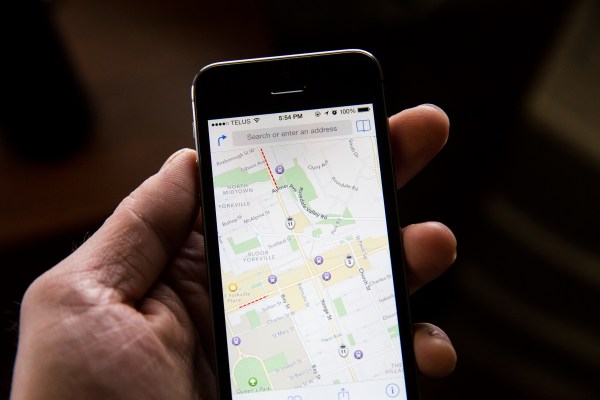Apple has added a trick to its CoreLocation set of geopositioning tools in iOS 8, 9to5Mac has noticed, and that will make it possible for venue owners to build indoor positioning systems into software tied to their facilities. iOS 8 adds the M7 processor and iPhone motion sensors to the CoreLocation API, handing off location tracking to those elements from GPS, cell and Wi-Fi tower broad location detection used for outdoor navigation when a user arrives at a venue.
The new process is being touted by Apple as a perfect complement to iBeacon tech, but as also distinct from that Bluetooth based feature. The company is seeking sign-ups now from venues looking to utilize these features, and these IPS features are already in use at thee locations, including the California Academy of Sciences in SF, the Westfield San Francisco Centre, and the Mineta San Jose Airport, and it can do things like display current floor number or direct users to specific points of interest, say within a museum exhibit.
All of this will come in an upcoming iOS 8 beta build, and it’ll also help conserve battery while in use by dropping the GPS when a device reaches a venue with IPS enabled, switching over to M7 and other sensors instead, 9to5Mac reports.
Apple tackling IPS should not come as a surprise; it acquired WiFiSLAM, for instance, and took the top talent away from IPS startup Wifarer, too. Google also does indoor positioning, and is increasingly making an effort to map the interior of major venues and facilities, so Apple essentially has to keep up in this regard if it wants to make Maps truly competitive with Google’s services. It sounds like this will still work best when used in tandem with iBeacons, but together, Apple could drive a lot of interest in IPS from businesses, especially given how good its mobile platform has proven to be at driving revenue-generating activities.
